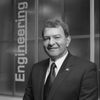Today, it's more important than ever that our young people develop the critical thinking skills needed to solve tough 21st century problems.
In October, Michael Bloomberg gave the Museum of Science a $50 million gift. Calling the Museum, "the first teacher to have a profound impact" on his life, he said that on his frequent Saturday visits he, "learned to question, to think, to recognize just how much there is to learn about the world."
In one transformative act, the philanthropist, engineer, and three-term New York City mayor is offering millions of children and teens the opportunity to explore the world around them, just as he did at the Museum of Science. He believes that young people need the analytical skills associated with scientific inquiry to succeed as workers in every field, as citizens, and as future leaders.
Mike also believes in the power of science museums to inspire. The key for him was our Museum's "hands-on exhibits" which "made everything come alive." Moreover, science and technology centers across the country are ideally suited to bring together people of all ages, backgrounds and abilities to think and talk about challenging issues, spurred by new research and innovations. Students need to know much more than what's on standardized tests; we want them to learn how to ask questions, conduct research, and use that knowledge to solve problems.
According to the Association of Science-Technology Centers (ASTC), attendance at 151 U.S. science centers in 2013 was nearly 54 million. With resources that most schools don't have, science museums offer interactive activities involving realistic situations that can intrigue students who might not see themselves as "smart." Museum educators can demonstrate, in non-threatening environments, that problem-solving often involves trying and failing first. Just as museums need to invest significant time and energy prototyping, testing, and revising exhibits to ensure they meet educational goals.
Like Mike, I believe that science museums can inspire and foster critical thinkers in different ways. Here are a few examples:
•Chicago's Museum of Science and Industry engages visitors in large-scale experiments involving powerful natural events in its Science Storms exhibition. Visitors can test the vortex variables of a 40-foot tornado, set loose a tsunami in a 30-foot wave tank, or discover how fire reacts to different conditions.
•Museo Móvil Interactivo is bringing interactive science to Mexico City's 22 million residents over the next five years. Visitors, guided by young scientists, explore the free mobile museum's exhibits on the brain, geology, scientific vocations, and the science of daily life. Museum general director Arturo Barba Navarrete said, "We want to show that science allows people to make better decisions" and helps address important problems.
•A 2013 study by San Francisco's Exploratorium found that learning to ask good questions such as "What if?" or "How can?" often leads to more questions, more experiments, and better interpretations. Its Mind exhibition encourages guests to test their thought processes and emotions. For example, visitors drink from a water fountain resembling a real but unused toilet and explore their reactions. And conversations with a computer encourage museum-goers to question if its responses are evidence of consciousness. Visitors there also discover how expectations can cloud their ability to interpret new experiences. Other exhibits explore the process of decision-making.
•Science museums and scientists across the country have been holding events and using kits featuring hands-on Building with Biology activities to spark conversations between the public and scientists about synthetic biology, a new field with exciting possibilities and concerns over potential applications. The goal is for the public to learn to make informed choices and for scientists to discover what the public thinks. Recently, Jefferson City, Missouri, Boys & Girls Club youth participated in kit activities about cells and DNA. Club educators appreciated both the science and, equally important, the "exposure to life skills."
•Our own Provocative Questions exhibit addresses issues often deemed controversial: Should parents know the genome of their future or newborn child? Should scientists genetically modify mosquitoes to control disease? Provided with scientific evidence, visitors have discovered how their personal experiences and values can shape their decisions. Being explicit about the role of personal values and experiences can help people integrate science into different viewpoints and make them more open to other perspectives.
I hope that Michael Bloomberg's generous act will encourage others to give to science museums. Let's join him in motivating and preparing the next generation of critical thinkers to help make our world a better place. And as he once said, a science museum visit might inspire a youngster to appreciate science, "go on and win a Nobel Prize, cure cancer. Anything is possible."
